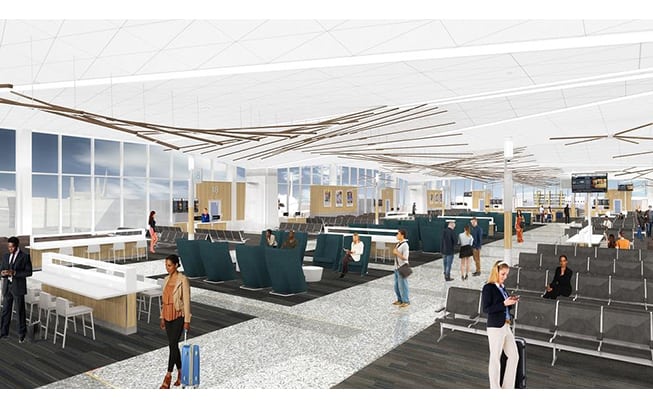Memphis International (MEM) revealed updated plans to redesign and modernize its Concourse B.
The multiyear, multiphase plan will involve the modernization of MEM’s Concourse B, as well as consolidating all airline, retail and food and beverage businesses into the remodeled concourse. Highlights of the modernization include the addition of wider corridors, moving walkways, larger boarding areas, higher ceilings and increased natural lighting. Additional amenities and concessions options will also be added.
With MEM now an origin-and-destination airport rather than a transfer hub, modernization is necessary in order to streamline passenger flow, increase space and amenities, and create a more efficient travel experience, the airport said.
The project is estimated to cost $214 million, a price that includes the cost for improvements to other concourses that are necessary to undertake before the B Concourse construction begins. Concourse B will close next year for the remodel, and upgrades to the A and C Concourses are necessary to accommodate additional airline operations there during that time.
Eventually, all airlines will operate out of the B Concourse, which is expected to open in early 2021.
“This is a lengthy, complex process, and it’s crucial that we do it right in order to deliver the best possible airport experience for Memphis travelers,” said Pace Cooper, chairman of the Memphis-Shelby County Airport Authority Board of Commissioners. “We’ve made progress thus far, and more significant changes are on the horizon. These changes are all part of a project that will result in a modern, convenient, state-of-the-art airport for our passengers, airlines, concessionaires and other partners.”
While concessions planning is still in the early stages, MEM said concessions in the A and C Concourses will move to the B Concourse, and the new facility will feature new and enhanced retail and food options.
The majority of the modernization costs will be funded by federal and state grants, with the balance coming from the operating budget. The airport authority also plans to issue general airport revenue bond debt to help fund the project. The remaining costs are factored into the airport’s terminal rates and charges, which are paid by passenger airlines and other terminal tenants that operate at MEM.






